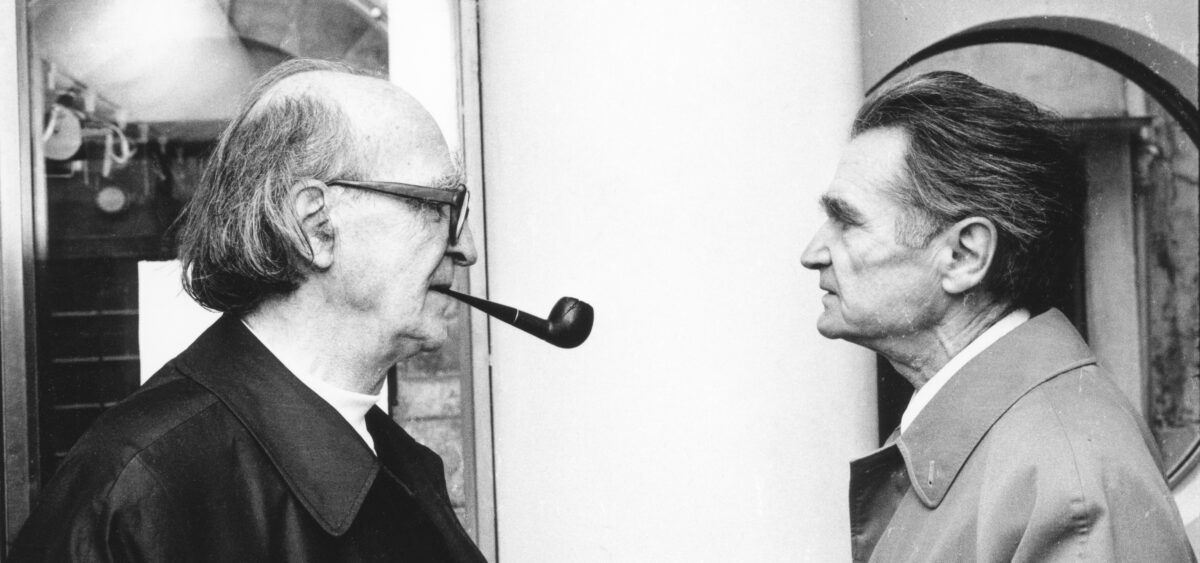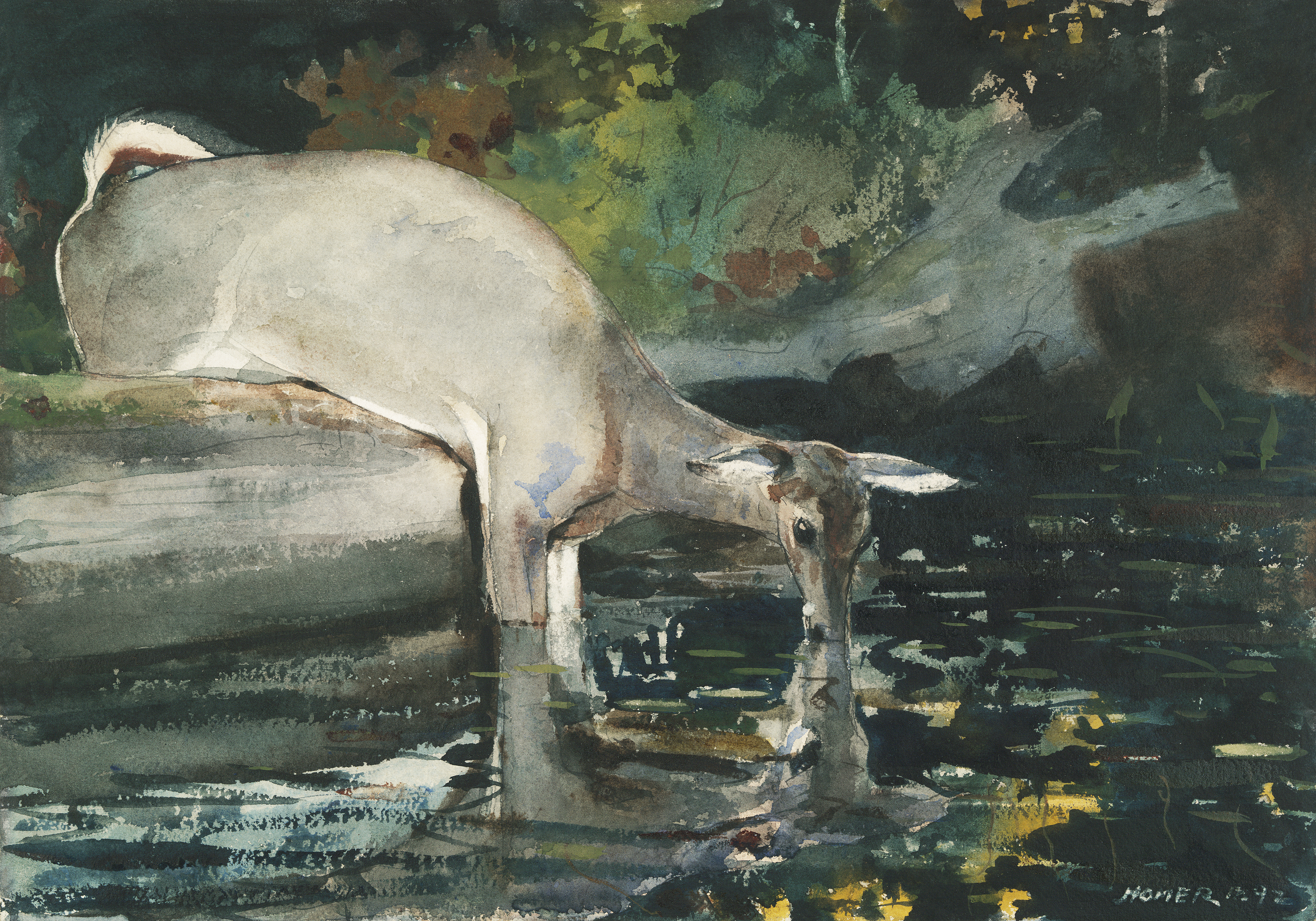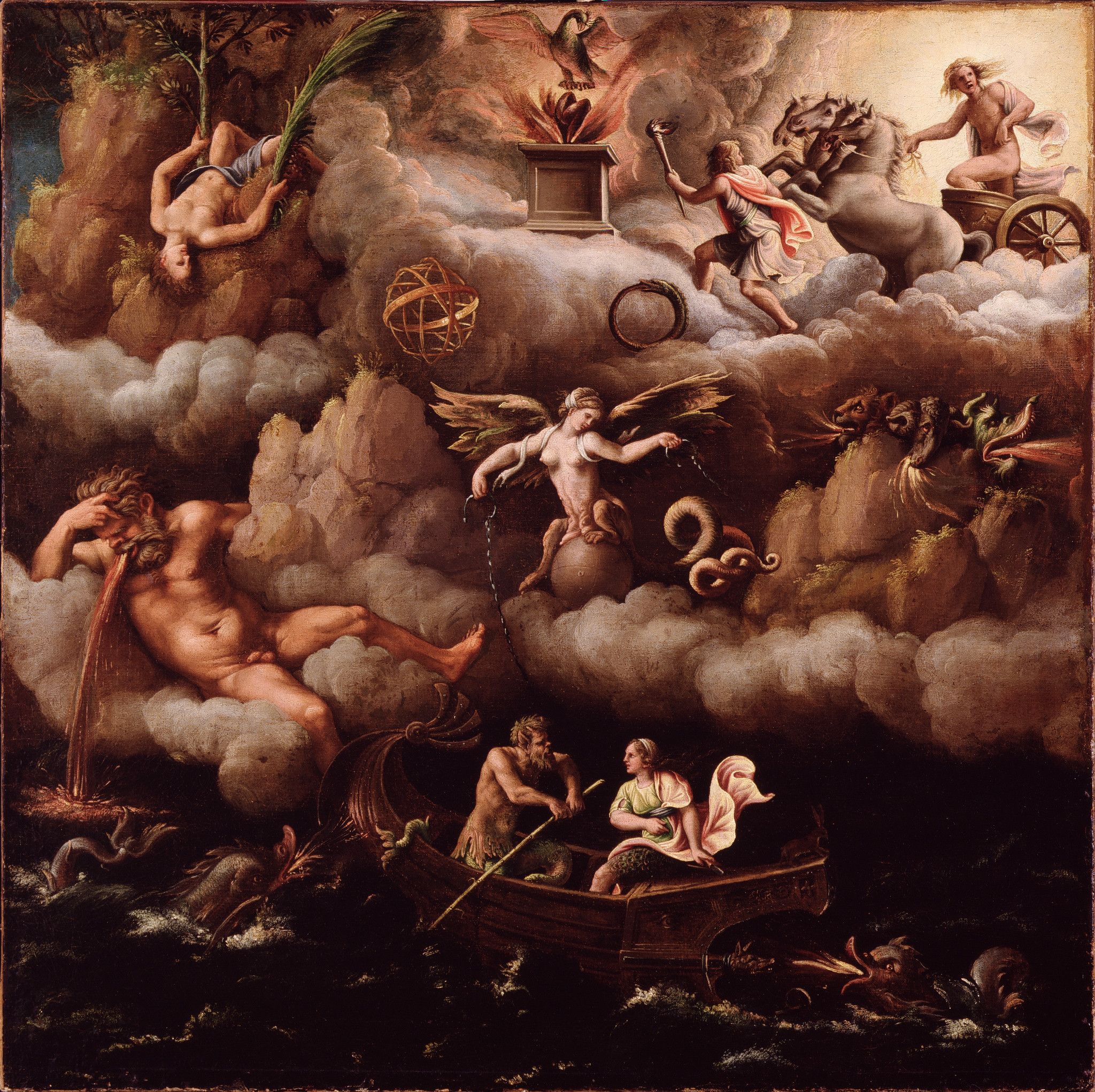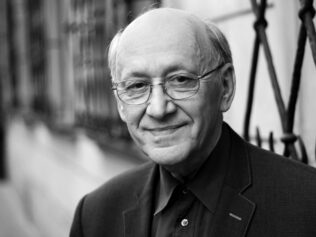
These days, celebrating a festival may resemble more a theatrical spectacle rather than an event where something really happens. Mircea Eliade proposed a theory that allows us to understand both the meaning of a religious ritual and a certain universal tendency of the human mind.
Eliade was the best known and perhaps greatest historian of religion in the 20th century. Not only did he author pioneering and still relevant monographs dedicated to phenomena such as shamanism and yoga; he also left behind countless ideas that make it possible to interpret various religious and cultural phenomena. A particular place in the research of the Romanian scholar is occupied by the idea of “crisis and renewal,” related to his concept of the religious festival.
To understand it, Eliade’s theory of myth must first be summarized. Today, “myth” is a popular word to describe a stereotype or fairy tale, often in relation to Greek and Roman stories. Treating a myth as fabrication or fiction is the long legacy of ancient philosophy. The Milesians subjected the Homeric tales to criticism, providing the beginning of philosophical speculation (contrary to the ethnocentric imagination that’s still so popular today, this contribution did not come exclusively from the Greeks; philosophy emerged in a similar way in China, India, and Mesoamerica). But that doesn’t mean these first philosophers didn’t think with the help of myths themselves; more fantasies emerged in place of traditional ideas. According to Eliade, mythical thinking is typical for all of humanity. French anthropologist Claude Lévi-Strauss said the same thing, though from a slightly different perspective. For example, he believed the theory of the Big Bang or Schrödinger’s cat were new variations on mythical structures known to ethnologists and historians—the Big Bang is fundamentally very reminiscent of the Biblical myth of creation ex nihilo.
But ethnology and religious studies don’t use the concept of myth as a synonym for “fabrication.” From a religious person’s point of view, it’s precisely the opposite: a myth is a story that’s true to the highest degree. Communities in which myths are still alive are careful to separate “true” from “false” history—myths from legends or fairy tales.
The classical Greek myths are the “immovable” versions, partly torn from their religious context and subjected to artistic processing. The ancient Greeks’ “living” folk religion was not set down in writing. In reality, in “primitive” cultures there’s no canonical version of a myth. Transmitted by generations of tellers, it gets modified depending on their narrative abilities, and changed over time. But its holy nature means it’s not always accessible everywhere. Among certain peoples, myths can be declaimed only at a certain time of the year or day. In some cases, only the initiated can learn the holy stories of the tribe. According to Eliade, an immanent characteristic of myth is that it plays out at the beginning of time, in the era of the sacrum. In the era when gods, titans, supernatural beings, and ancestors lived; when events were truly significant. Myths tell of the beginning of the world, how it was created; what the gods and ancestors did; why the world and the life of society are this way and not another; why death exists.
Myth always speaks of a “creation”: of the world, humans, animals, specific institutions, or professions. Through knowledge of myths, i.e., “beginnings,” a person gains the ability to rule over the things the myth describes. A holy story transcends the life of society; it constitutes an external power acting on it. According to a neat formula, it describes events that “never happened, but always happen.” The influence it has on the culture means myth comes to resemble ideology. For this reason, to understand any culture, one must first get to know its mythology. If the solar deity, such as that in Aztec mythology, needs human blood to be able to continue traveling through heaven, its worshippers will go to war and sacrifice the prisoners. In turn, if, as in the Biblical myth, Yahweh is a jealous god, his followers will be marked by religious intolerance.
The Continuous Present
A religious ritual is nothing other than an attempt to return to a sacred time. Liturgy is not theatrical imitation, but a real attempt to enter the mythical time, to recreate it and make it present. Thanks to ritual, mythical time never passes; it’s infinitely renewable. It’s not subject to change; it’s inexhaustible. It’s always the same manifestation of the first sacred time, marked by the presence of supernatural beings.
This view can be illustrated in a variety of ways. It’s laid out directly by the authors of the Shatapatha Brahmana: “We must do what the Gods did in the beginning” (VII, 2, 1, 4). Likewise, the Taittiriya Brahmana: “Thus the Gods did; thus men do” (I, 5, 9, 4). In turn, during Catholic mass, the priest quotes Christ: “Do this in remembrance of me.” The participants in the rite become contemporaries of the Last Supper, they recreate the sacred time marked by the presence of the Savior. It’s not a representation, but a temporary realization of this event. Baptism isn’t an artificial ritual, but has its precedence in the Gospels. The Stations of the Cross are a true experience of the passion of the Redeemer. Many other practices derived from the history of Christianity become comprehensible only in relation to mythical patterns. The medieval flagellants took as their model the suffering of the Savior. The popular medieval handbook of asceticism by Thomas à Kempis bears the title The Imitation of Christ. Søren Kierkegaard encouraged people to be contemporary with Christ.
Multiple examples can be taken from the Christian tradition, but it must be pointed out that according to Eliade, Christianity, by stressing the “historicity” of the life of Jesus, modified the general rule encountered in the history of religion. Pre-Christian beliefs appealed to a cyclical mythical time, which was independent of history, preceded it, but also transcended it.
Religious ritual regenerates reality, restores its creative power. The holidays of renewal that are most representative for the history of religion are all New Year observations. In many traditional societies, they were tantamount to a literal rebirth of the world. These rites recreated cosmogonic myths, describing the world’s beginnings. During the Babylonian festival of Akitu, participants recited the famous poem Enuma Elish, which describes matters including the mythical battle of Marduk against the monster Tiamat, of whose parts the universe was made. During the festival, actors played the characters of Marduk and Tiamat (similar ceremonies were found among the Hittites and the Egyptians). During Nowruz, the Persian New Year holiday, the king-priest would announce that “time has run out.” The old order was symbolically destroyed: during the festival the social hierarchy ceased to apply, lights were put out, masks meant the living mixed with the dead, an orgy broke out. After this time of chaos, imitating the Chaos that preceded Creation, the new year came. The New Year’s Eve celebrated in Europe and the USA, too—with its explosions, dances, and libations—is a distant heir of these archaic rituals.
There are other examples from Europe which illustrate the regenerative functions of ritual. Poland’s springtime Drowning of Marzanna, an effigy representing death, is a symbolic farewell to exhausted creative powers and the arrival of universal rebirth, which must always take place. On Midsummer’s Eve a sacred fire is lit, which is later extinguished, but only to light the next one: “new” and “pure,” cleansing and healing.
The following of a supernatural archetype can also be discovered in certain religious phenomena. Eliade saw this mechanism in many healing rituals, too. Middle Eastern and European undoing spells refer to the archetypal moment when a deity or saint defeated the demon responsible for an illness. In an Assyrian spell directed at toothache, a myth is recalled in which the gods called on Ea to curse the worm that instead of fruit chose to eat human teeth. The mandala, an Indo-Tibetan creation, is not a combination of meditation and solving a puzzle, but recreating the structure of the cosmos, a return to an image of all existence that is “pure,” “creative,” and laden with potential.
What’s more, according to Eliade in the world of the “primitive” human it’s not only ritual that appeals to the mythical archetype, but also all activity that has meaning: hunting, fishing, farming, sexual life, social customs. The more “primitive” the society, the more ritualized the behaviors. In New Guinea, when a soldier leaves on a journey, they imitate the mythical hero Aori: putting on the traditional costume attributed to him, painting their face black, dancing, and opening their arms, as Aori did with his wings when he was preparing to fly. While hunting, people from New Guinea believe themselves to be following the example of the mythical hero, or in fact identifying as him.
If something has no archetype, it doesn’t present any larger meaning; it has no name. For this reason, an archaic religious person doesn’t know the process of history. Their history is a continuous return of the same thing: time in the form of a wheel. The contemporary concept of “history” is unimportant for them, because it has no supernatural archetype.
Humanity knows two types of time: the sacred and the secular. As the walls of a shrine delineate the boundaries of the sacred and secular zones, so the ritual lays out the boundaries of two kinds of time. Sacred time, set by ritual, is qualitatively different, an “eternal present.” The religious person shows a sort of inclination toward unceasing return to it. In turn, secular time is a period of work or boredom; meaning appears in it insofar as a phenomenon or event appeals to its mythical archetype, to the sacred beginnings.
Homo Religiosus
A popular atheist criticism says that to refer to the past this way is to give in to delusions and make empty gestures that are an expression of infantility, a lack of “realism” and courage to take responsibility for one’s own life. But according to Eliade, it’s completely different. The archaic person takes responsibility for renewal, strengthening, refreshing the world’s creative powers. The lives of other people, animals, and institutions all depend on this person. Continually expressed care for the ritual regeneration of the world is an expression of their “realism.” Even rites that might appear strange, such as human sacrifice or cannibalism, were established by the gods and are necessary for life to go on (it is also worth noting that more familiar European traditions are not so far from seemingly “savage” ones: according to the Catholic Church, the Eucharist involves consumption of the body and blood of Christ; the burning of witches at the stake can also be classified as institutionalized ritual murder). Negation of the significance of the “external world,” characteristic of the Abrahamic and post-Vedic religions, is a statistical minority in the history of religion. In general, religiosity manifests itself through closeness with nature and caring for it.
Eliade said that humans are Homo religiosus. So the de-sanctification of the Western world today is only a momentary phenomenon. Humans as we know them will always remain religious; as long as there is earth and sky, fire and water, changing seasons, animals and plants, all of this will stimulate the poetic-religious imagination and lead to the same ideas and behaviors.
According to Eliade, religious customs still exist in secularized Western culture, but often in a camouflaged form. Traces of myths can certainly be discovered in literature, but is there such a thing as a secular rite?
Mythical-ritual behaviors can be identified in trips to places associated with famous or historic personalities. Visiting the home of a famous writer is a mythical journey through a space that was set apart by their presence. All celebrations that commemorate a certain event betray a structural similarity to a religious rite. The ceremonies that honor the memory of the Warsaw Uprising, which take place beneath my window at the beginning of August each year, are in fact an attempt to make tangible what happened to Poland’s legendary ancestors—an entry into a time of events saturated with meaning.
The restoration of order in the Persian New Year is one of the characteristic elements of a festival. In the Middle Ages, during Carnival the king became a jester, the beggar a king, and the bishop danced (the moment of critical reaction and lectures from the pulpit came only after it was all over). In this regard, contemporary phenomena evince a certain similarity to the world of carnival. During great sporting spectacles, the supporters’ social status is suspended; in the stands, everyone is equal. When people meet at a techno party on the weekend, within the ecstasy they experience their everyday professions lose any meaning. What’s more, the loud, rhythmic music reveals certain “archaic” behaviors or states, and this association is additionally strengthened by the use of psychoactive substances.
The contemporary irreligious person, in Eliade’s view, is certainly also subject to various discontinuities in time. They experience many times, which are characterized by various degrees of intensity. The almost “superhuman” quality of liturgical time is no longer available to them. Secular time always includes exclusively “human” experiences. In the religious world, it’s the opposite: one achieves the ability to experience what the gods experienced.
Longing for the Beginning
Every society, regardless of its degree of development, shows a tendency to constantly restore mythical time. The desire to return to the beginning runs through a given culture in countless ways, depending on what it imagines “beginnings” to be. Time, meanwhile, is subject to degeneration—hence the need for periodic “returns,” which cause the world to regenerate and be reborn. All of the medieval “rebirths,” as well as the Italian renaissance, drew their power from a return to forgotten ancient sources, to mythologized ancient knowledge. The Reformation was inspired by the gospel message at its source, the “original spirit” of Christianity. Even today the theory of “ancient aliens” has at its center the fundamental understanding that the aliens were, well, ancient.
A similar structure exists in psychoanalytic therapy. The therapist attempts to understand what happened “in the beginning,” co-creating the individual’s private mythology. Each return to a favorite film or book betrays a longing for a return to one’s myth. If somebody says they need to “get back to myself” they lock themselves in their room, put on a favorite album and move in a familiar space; they follow themselves, their own archetypal “source” gestures, which help them recover their lost strengths. If somebody is reading the Harry Potter series or watching The Lord of the Rings for the hundredth time, they behave like—to use a category popularized by Eliade—“archaic man.”
Here an even more general interpretation of the Romanian scholar approaches. He believed every ritual behavior is an attempt to return to Paradise, to recreate the situation of Paradise. But Paradise is not necessarily understood as an eternal idyll; it is simply the sacred time of the ancestors, a reality saturated with meanings and creative energy. Eliade believed the longing for Paradise to be a universal attribute of the human mind.
A Critical Look
Critics of Eliade’s theory have noted that the idea of “eternal return” finds application in many cultures, but not all. According to certain scholars, the Romanian developed his concept on the basis of research into Aboriginal Australian religion (the famous Dreamtime is an ideal myth time), and then extended it to the entire history of religion (though I will add that this seems unlikely to me: in his first significant publication, Patterns in Comparative Religion, Aboriginal examples appear only rarely).
The division between sacrum (sacred time) and profanum (secular time) has been subjected to criticism by successive generations of scholars. Making the distinction is problematic even when applied to ancient Greek culture. These areas intertwine and overlap too much to be treated independently.
The outstanding scholar of ancient religion Walter Burkert supposed that ritual could have preceded myth. Observing the behavior of certain animals, the outlines of ritual can be detected. It’s the same with the genus Homo. A religious offering or magical practices could exist independently; it’s only later that they were “refined” with the explanatory stories. That’s why myth and ritual don’t necessarily need to be seen as inseparable.
From today’s perspective, some of Eliade’s formulations, such as “archaic man,” may meet with resistance—it’s doubtful that there existed a single “archaic man” or “primitive man.” But Eliade used these formulations more to understand the primitive human par excellence; not in a historical sense, but a “logical” one. In several places in his work, the idea of the “total man” appears: a certain type of superman-mystic, who by using all of his physical, spiritual, and imaginative strength, reads the world as a collection of symbols, experiencing divinity everywhere; something in the nature of his favorite figures, the shaman and the yogi. But in this way Eliade crosses the boundary of academic scholarship and enters the area of philosophy of the human.
His work doesn’t apply only to narrow scientific questions, but is an attempt—a daring one, despite it all—to understand humans in general, the universal patterns of their imagination. Eliade himself encouraged other scholars to create bold, far-reaching hypotheses and syntheses, even at the cost of errors, because only in this way can knowledge be broadened. It is certainly hard to deny the depth and vigor of his deliberations. So do those who don’t long for Paradise belong to the majority, or rather the minority?










